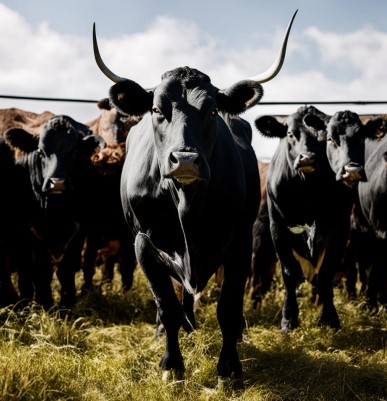Foot-and-mouth disease resurfaces in Europe

Bluetongue and epizootic haemorrhagic disease (EHD) are two livestock diseases that have been the most discussed in Galicia in recent times due to outbreaks detected in various livestock farms and the damage they can cause to the animal and its owner. However, there are other diseases that threaten the HEALTH of livestock, and among them, foot-and-mouth disease has re-emerged. Unlike the previous diseases, this is a viral disease that is not transmitted by mosquito bites. it is characterized by high contagiousness and high economic consequences.
There is no cause for concern, as the last outbreak in Spain was in June 1986 on a cattle farm in Talavera de la Reina, and vaccination against the virus has not been carried out in the country since the late 1980s. However, the emergence of cases in Europe – first in Germany and now in Hungary and Slovakia – shows that the threat is real and that we must not let our guard down.
Alberto Díez Guerrier, a clinical veterinarian specialising in ruminants and professor of veterinary science at the Complutense University of Madrid, explains that the risk and concern have always existed, and that these outbreaks only “make the problem visible” and remind us of the importance of “careful monitoring” of this infectious disease.
It is endemic to large areas of Africa, Asia, the Middle East and South America, so in some cases it is found near Spain. The fact that the disease has reached countries further from its traditional foci is a warning.
In any case, the expert sends an optimistic message: “For these outbreaks to reach us, things would have to be done very badly,” he says, referring to the eleven active outbreaks on dairy farms in Hungary and Slovakia, according to information provided by the Ministry of Agriculture. He emphasizes that there is a surveillance program and contingency plans in place.
Alberto Diez explains that foot-and-mouth disease has no effect on humans, but that it is “quick and easy” to infect animals. And it has a “very large” economic impact, both because of the direct losses it can cause to farms and because of the costs of controlling and eradicating the disease. The vet cites the foot-and-mouth disease epidemic that hit the United Kingdom in 2001, killing millions of livestock and causing “billions” in damage.
Once the disease is detected, legislation requires the sanitary evacuation of affected farms to prevent its spread to other farms. The possibility of urgent vaccination is also being considered .
Read together with it:
- He crawled to the icon with prayer. The true story of a man who overcame drug addiction.Alexander Ovchinnikov. Topic News. Our project's hero was a drug addict for many years. The thought that this was a dead end never left him, but his addiction proved stronger. One day, when he could no longer walk, he crawled to an icon in prayer. This became his first step toward a new life. Today, he heads a charity center that helps those who have given up hope and are unable to quit ALCOHOL an...
- Низкое предложение и устойчивый спрос: в Аргентине растут цены на мясоЦены на говядину снова выросли, что отразилось на полках супермаркетов и в мясных магазинах. За последние две недели розничные цены выросли на 8–12%, а на некоторые популярные отрубы рост превысил 15% по сравнению с октябрем. Тем не менее, продажи остаются высокими: потребители продолжают покупать, принимая новые цены и закрепляя тенденцию, которая повторяется каждый год в конце года, когда спрос ...
- Колумбия: При экспорте скота сертификация и прослеживаемость больше не являются необязательнымиВысококачественное животноводство, особенно при экспорте, требует сертификации и прослеживаемости. Это необходимые условия для выхода и конкуренции на многих международных рынках, а также на некоторых всё более требовательных внутренних рынках. Колумбийское животноводство не является исключением из этих правил, и, хотя предстоит ещё многое сделать, всё большее число ферм и компаний внедряют эти ме...
- Лучшие не только по молоку. Какие рекорды поставили в экспериментальной базе имени КотовскогоНовости темы Экспериментальная база имени Котовского известна далеко за пределами Узденщины благодаря высоким показателям, которых из года в год добиваются в хозяйстве. Лучшие результаты в районе агропредприятие показывает как по молоку и зерновым, так и по сахарной свекле. Страда этого года, проходившая не в самых простых погодных условиях, также стала рекордной. Хлеб – всему голова Весна 2.........
- Agricultural organizations in Kabardino-Balkaria increased meat production by almost 20%.Over the first nine months of this year, agricultural organizations in Kabardino-Balkaria increased livestock and poultry production (for slaughter, live weight) by almost 20 percent compared to the same period in 2024. In physical terms, production in this category of agricultural producers amounted to 37,6......


























































